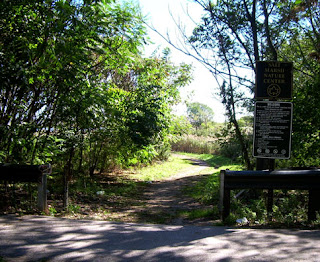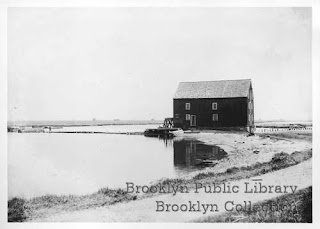Most of the western end of Rockaway is now part of Gateway National Recreation Area.
This tree in Riis Park is a popular spot for migrating butterflies:
This tree in Riis Park is a popular spot for migrating butterflies:



 |
| old munitions storage |
From a Parks Dept. web site
"Established in 1917, Fort Tilden is named for Samuel Tilden, who served as Governor of New York and was the Democratic nominee for President in 1876.... the fort was decommissioned as a military installation in 1974. It was then transferred to the control of the National Park Service.
Today the national park at Fort Tilden offers a mixture of past military structures and reclaimed natural areas. A walk through the fort includes many great spots to see wildlife in the successional maritime forest, along the Atlantic shore, and near the fort's freshwater pond. The observatory deck on top of Battery Harris East, a historic gun site, offers dramatic views of Jamaica Bay and New York Harbor, and is a great vantage point to spot migrating birds."
"Breezy Point Tip is an isolated peninsula beach fronting Jamaica Bay. This wild westernmost tip of Rockaway Peninsula, transferred to the National Park Service in 1972, features over two hundred acres of ocean-front beach, bay shoreline, sand dunes, marshes and coastal grasslands all within New York City."
all photos copyright nycedges 2010



























